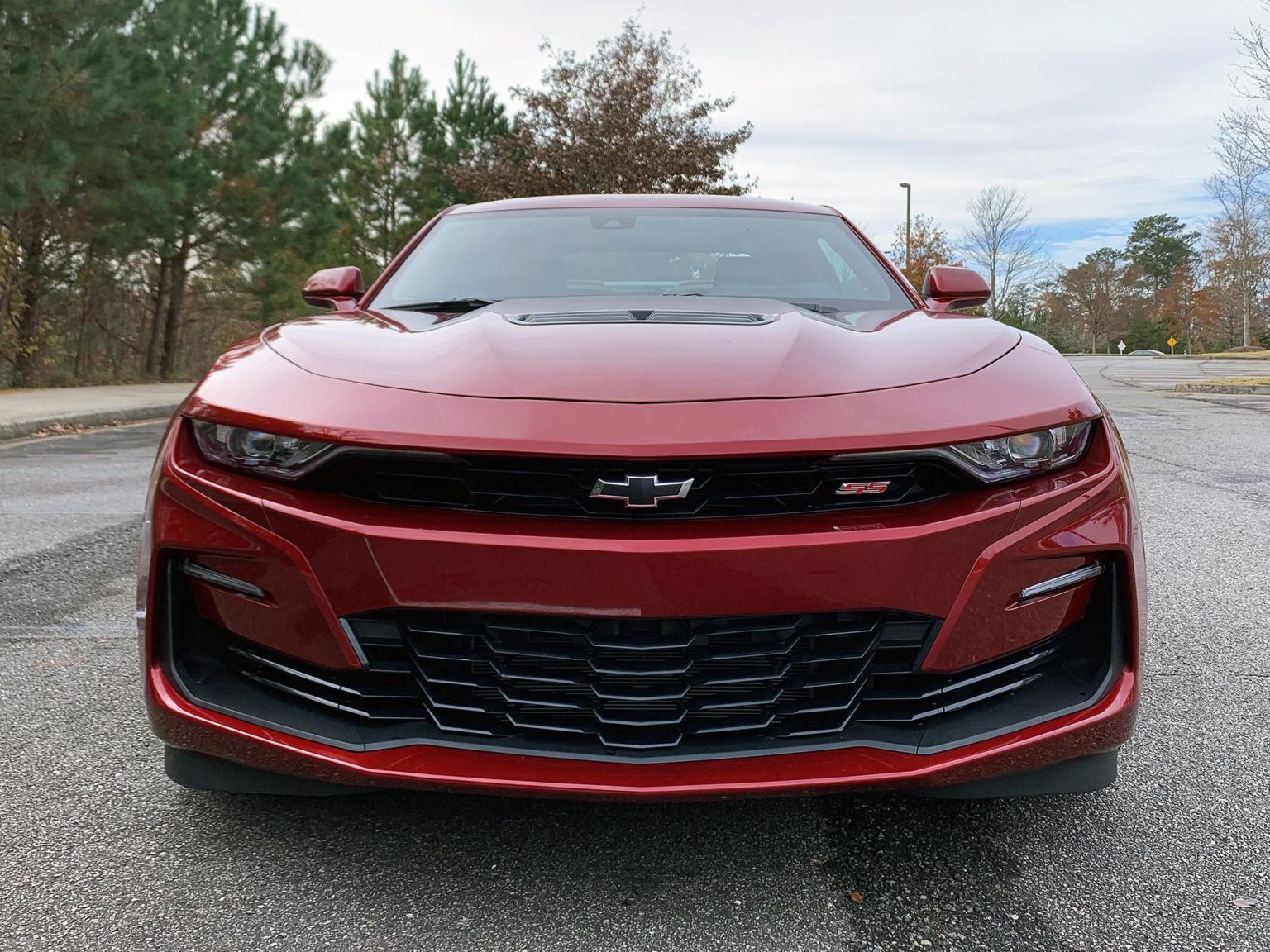There are few cars that make me want to stop driving them. The first was the last-generation Toyota Prius. The other was the 2021 Chevrolet Camaro. It’s not all bad. Certainly each has their advantages and disadvantages, but the drive experience for both made me prefer to park it.
The Camaro is a good car. A perfectly good car. It’s one of the best embodiments of American muscle you can buy new, today, right up there with Ford Mustang. As tested in the 2SS grade, the Camara is sporty, quick, and stylish. Still, it’s not perfect – not by a long shot.
The Camaro has an athletic and beefy body style.Photo courtesy of Chevrolet
What the Camaro isn’t missing is the one thing that enthusiasts will say that it absolutely has to have in order to be a true sports car. Buyers get a six-speed manual transmission (standard) in their Camaro SS, but doing so is one of the worst decisions you can make when buying a new Camaro, unless you’re prepared to take it to a mechanic and have some aftermarket *ahem* fixes done to it. Chevy also offers their smooth-as-silk 10-speed automatic for discerning customers.
With long, narrow channels and an even longer stick, simply operating the car’s shifter was a chore. Add to that the numb clutch and gas pedal and GM’s skip shift technology, which requires the driver to skip gears to save on fuel, and the entire experience is enough to make you want to stop driving the car.
Buyers who get the six-speed in their Camaro LT1, SS, and ZL1 get active rev matching technology included. This tech stabilizes gear selections on the way back down and proves especially helpful in driving situations where you’d have to slow but not stop, such as where the person in front of you is moving into a turn lane or you are traversing a rotary. The tech also is said to improve fuel economy.
If you’re driving the Camaro with a stick, you’ll be unable to use the car’s cupholders while driving due to their position on the center console.Photo courtesy of Chevrolet
But it’s not natural. None of it feels natural. You simply shouldn’t be able to stay in sixth through a roundabout or drop below 1,000 rpms in a gear without serious feedback from the powertrain. Downshifting to gain more torque is a thrill and an exercise in the type of control buyers of this type of transmission crave. To have it mellowed by technology for perceived convenience is maddening.
The manual also requires a high level of revving to get off the line. The Mustang with the Performance Pack requires this too. However, in the Chevy there is more rearward sway than is usual in a six-speed. And, in case you haven’t noticed, drivers are keen on crawling up a vehicle’s backside at a stop light.
So there I sat, at an intersection with 455 horsepower and 455 pound-feet of torque ready to be generated by the car’s 6.2-liter V8 and all I could think is, “I really hate driving this.”
The seats of the Chevrolet are comfortable though the rear seats are lacking the legroom that would make sitting easy for adults.Photo courtesy of Chevrolet
You see, it’s the driving bit that’s the issue. The $44,000-ish Camara was plenty filled with tech and well-styled appointments. It was all a bit status quo for the Chevy lineup, but an abundance of shared parts are what you can expect from most every GM model. Fit and finish was about as good as you could want.
But when you’re in it, you don’t care. All the reasons you’re in a Camaro fly out the window when you realize that you really hate driving it. It’s better to be seen in a Camry that delivers you comfortably and capably to your job than a Camaro that causes to you arrive frustrated (yet again) and browsing the best car deals ads (yet again).








